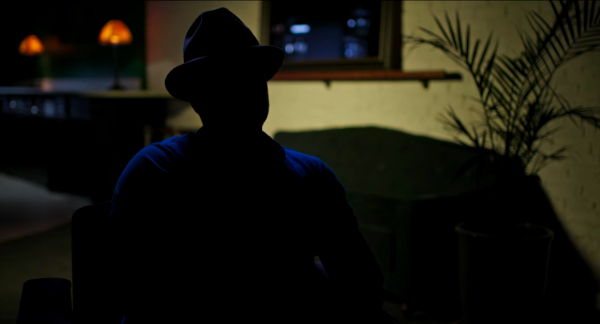This current golden age of documentaries — when nonfiction film has shaken off the stigma of being a fringe medium and firmly established itself in the mainstream discourse — has arrived just when we need it most. Newsroom employment in the United States plummeting 51 percent from 2008 to 2019 has deprived Americans of the investigative journalism so critical to keeping government and corporations accountable. Fortunately, documentarians have been able to step into that void to bring to a mass audience stories that otherwise would not have been told, or would have received inadequate attention as a result of the gutting of the media.
The streaming services and longtime documentary champions like HBO deserve a great deal of the credit for giving documentaries the platform and the resources to be significant sources of meaningful journalism. The democratization of the click, when it is just as effortless to select American Factory as Avengers: Endgame, has encouraged viewers to discover and engage with documentaries with an enthusiasm never before possible.
While the extraordinary, global audience now accessible to documentarians has made nonfiction film journalism a remarkable force to be reckoned with — compare The New York Times’ 6 million paid subscribers to Netflix’s 182.8 million — the greatest contribution that the major distributors of documentary films have made to the medium’s salutary effect upon journalism is by providing documentarians with the financial resources and the time they need to produce world-class investigative works.
The carnage that has devastated virtually every newsroom in the country is even more calamitous than the numbers let on. So many expert journalists whose job it was to cultivate sources, master a beat, and hunt down promising leads have been replaced by low-paid substitutes whose marching orders are to chase clicks by slapping sexier headlines on wire service stories and churning out glorified gossip under the guise of news. The seasoned journalists who have been able to hold on to their jobs have largely been assigned to turn out day-of stories (as many as possible, so the number of clicks can justify their paychecks) that are a fine and essential chronicle of newsworthy happenings, but rarely go deeper than surface level because of the speed with which they have to be produced.

As for investigative journalists, the mythic figures Hollywood films like Spotlight and All the President’s Men venerate, they are an endangered species, not because these intrepid reporters don’t still exist, but because they require the most resources to do their job. These reporters — who unearth massive scandals, who hold the powerful to account, who transform our perspectives with their revelations — rely upon skilled researchers to help them with their investigations; other muckrakers like themselves to team up with on their daunting undertakings; and the financial resources imperative to follow the story wherever it leads them. These reporters need weeks, months, sometimes years to produce a single story, and sometimes their investigations don’t pan out, because that’s the nature of trying to solve mysteries that may turn out to be unsolvable. These are also the reporters who, when the bean counters that decide who to axe in the newsroom look at their bottom lines, are the first to be deemed nonessential employees.
While the state of investigative reporting is bleak in American newsrooms, it is bright in the offices where American documentaries are taking shape. With months or even years to devote to a single subject, budgets that would be the envy of all but a tiny handful of publications, and support teams of exceptional journalists and researchers — many of whom are only available because of newsroom cutbacks — documentarians are breaking stories, solving crimes, exonerating the innocent, exposing corporate malfeasance, and shining the light on injustices in a way that is nearly impossible for most news organizations to pull off given the financial model that constrains them.
In addition to conducting original reporting, documentarians are also using their monumental reach to amplify the extraordinary work still being done by investigative reporters who have managed to continue practicing their craft despite all of the systemic impediments. The recent episode of the Netflix series Dirty Money that we directed about Jared Kushner, entitled “Slumlord Millionaire,” was built in part on an outstanding exposé by ProPublica’s Alec MacGillis that appeared in The New York Times Magazine. MacGillis, who has become as vital to holding accountable the powers that be in Baltimore as the late, great Wayne Barrett was to keeping New York City’s top brass on their toes, picked up on a passing reference to Kushner owning properties in Maryland and followed that thread for three months until he got to the bottom of Kushner Companies’ predatory real-estate schemes in the state.
Since MacGillis had concluded his investigation more than two years before we revisited it, we sought to update his reporting and expand on it. One of the keys for us was adequately conveying the suffering that so many of Kushner Companies’ tenants endure as a result of their mistreatment, which MacGillis’ reporting so poignantly brought to light. Though MacGillis was able to connect us with one tenant who had gone through a nightmarish ordeal, Kamiia Warren, we had to locate the rest on our own. This was no small task, given the fear of retribution from their landlord the tenants rightfully had. Together with our episode’s researcher, John Knefel, who is a tremendous reporter in his own right and has written for publications like The Nation and Rolling Stone, we had limited success connecting with Kushner tenants in Maryland through outreach that stemmed from online inquiries, but ultimately we decided that those efforts were insufficient.
Fortunately, we had the resources to send John down from New York City and put him up in Maryland, so he could spend several days pounding the pavement in the Kushner complexes, speaking with tenants and earning the trust necessary for them to agree to appear on camera and welcome us into their homes. John being in Maryland afforded us the additional benefit of allowing him to sift through court records that were only available to in-person requests, a potentially futile undertaking that ended up uncovering an important document that wound up featuring prominently in our episode.

The indefatigable lead researcher for the entire second season of Dirty Money, former Vice News producer Isabel Evans, also proved invaluable to our episode. In our search for people with direct knowledge of Kushner Companies’ business practices in New York, Isabel discovered the whistleblower who appears in our episode, using an ingenious method we will not disclose in this article for fear that it could be replicated to compromise the whistleblower’s anonymity. After Isabel found the potential whistleblower, she spent weeks trying to convince the person to participate, despite the enormous risks the person would be taking. Ultimately, Isabel prevailed and in so doing corroborated a key part of our story.
The unsung excellence of behind-the-scenes muckrakers like John and Isabel is central to the success of any investigative reportage, be it by documentarians like us or major papers like The New York Times and Washington Post, and it is the loss of expertise like theirs in American newsrooms that has so diminished the media’s ability to perform its critical function as the Fourth Estate.
We were so fortunate that the production company behind the Dirty Money series, Jigsaw Productions, hired such talented researchers to work alongside us and provided us with the resources we required to leave no stone unturned in our investigation. Jigsaw, which was founded by Academy Award-winning documentarian Alex Gibney, who deserves recognition as one of the great longform journalists of our time, routinely exemplifies the best practices of investigative reporting in its films and television series. Jigsaw and its peer companies at the top of the documentary world, like RadicalMedia, Field of Vision, Concordia Studio, Show of Force, Lightbox, and Passion Pictures, among many others, have not just complemented the work of the premier conventional news gathering organizations, they have fostered and executed extremely ambitious investigative reporting that few other outlets in any medium of journalism could pull off today.
Filling the void left by the defunding and degradation of American media is a tremendous responsibility. Fortunately, there are so many brilliant documentarians across the nation who are rising to that immense challenge. All of us, filmmakers and film lovers alike, should cheer their work, for it is not just more impactful than ever, it is more important than ever.







